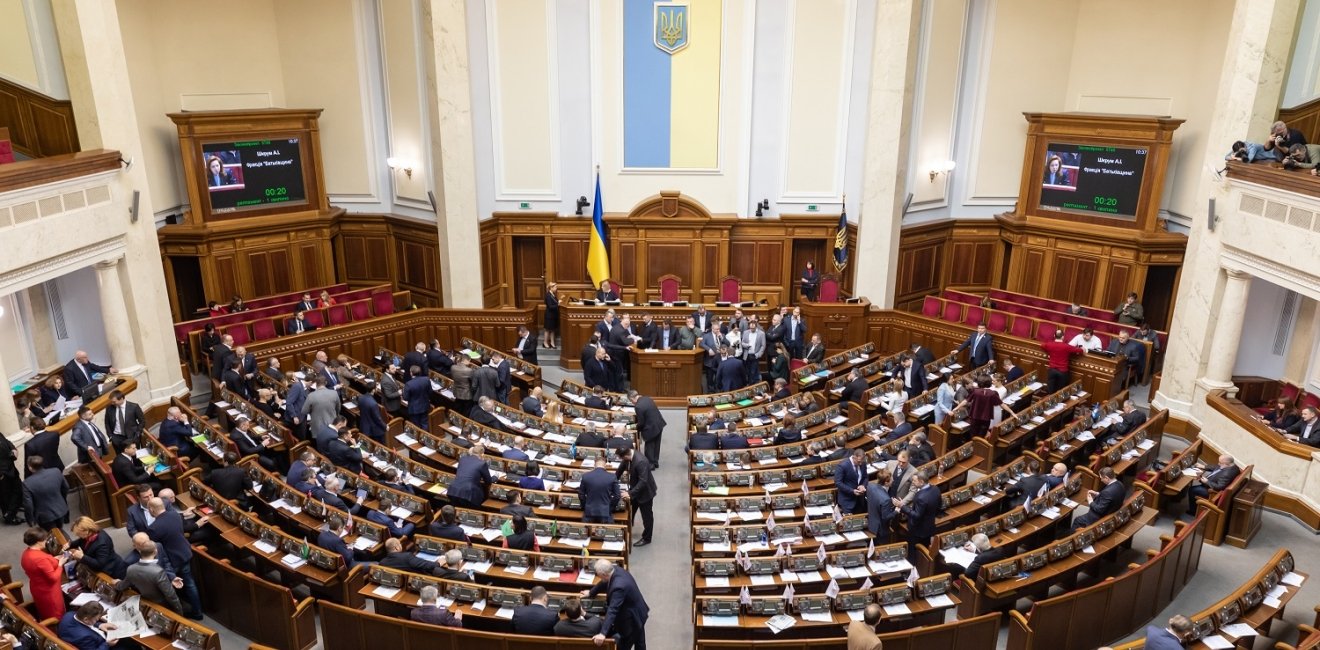
A blog of the Kennan Institute
BY MYKHAILO MINAKOV
Ukrainian politicians are about to return to Kyiv after the holiday break and immerse themselves in the new political season of February–June 2021. A quick review of the political achievements of 2020 is in order before we take up the major issues likely to dominate the new season of political competition.
Achievements of 2020
As I wrote last August, Ukraine’s political agenda of the preceding six months was structured around (1) conflict in the Donbas, (2) local elections, and (3) social issues born of the COVID-19 pandemic and related government policies to mitigate the pandemic’s effects. With the passage of another six months, Ukraine’s political year 2020 appears resolutely framed by those issues.
There was no major breakthrough in resolving the conflict in the Donbas. The Minsk Trilateral Contact Group (TCG) and its Political Working Group discussed issues related to the implementation of the mandate given by the TCG to develop a draft action plan in full compliance with the Minsk Agreements. The positions of the Ukrainian and Russian delegations were rapidly moving away from each other, which considerably hamstrung the work of the TCG. The only two visible achievements here were (1) fulfillment of measures to keep the ceasefire that went into force on July 27, 2020, and (2) the Verkhovna Rada’s reapproval of the law “On the Special Order of Local Self-Government in Certain Areas of Donetsk and Luhansk Regions,” which upheld the status quo and authorized continuation of the talks. However, as the TCG’s chair, OSCE ambassador Heidi Grau, reported, people continued dying from arms fire in the war zone.
According to my calculations, based on material openly available from the OSCE’s Special Monitoring Mission to Ukraine, the Ukrainian Ministry of Defense, and reports in conventional mass media, the number of victims of the conflict, including both civilians and combatants, fell significantly, to one-fourth or one-fifth of their number prior to the ceasefire. Also, according to OSCE SMM reports, the intensity of fire declined by more than four times in the conflict zone since August 2020. So the ceasefire has had a significant impact on the death toll in the Donbas, but the conflict is still in its military phase.
Local elections, which Kennan Focus Ukraine authors have analyzed on several instances (see this article and this one), were not a disaster for the ruling party but showed that Zelensky’s political magic in 2019, which churned out election winners, faded in 2020. Some 15 percent of all members of local councils were elected from Servant of the People party and 10.5 percent from Yulia Tymoshenko’s Fatherland party, with the Opposition Platform—For Life having the third-best result (9.9 percent) in the elections. Only one mayor of twenty big cities (Poltava) is from President Zelensky’s party; even the mayor of his native city of Kryvyi Rih was elected from the Opposition Platform—For Life. However, the ruling party has managed to create ruling majorities on fifteen oblast councils, and in four more oblasts the party participates in the ruling majority as a minor partner.
According to not entirely trustworthy statistical data, the epidemic situation in Ukraine started to improve in November, even in the absence of strong lockdown regulations. From approximately 15,000 cases daily in early December 2020 the number dropped to 7,000 new cases daily in mid-January 2021. Despite such inspiring figures, however, the government imposed a lockdown on January 8 (effective through January 24). Quarantine measures and the increased spending on public health have made their impact felt on Ukraine’s economy: the country’s GDP has declined approximately 5 percent.
Altogether, the problems of 2020 changed the political sympathies of Ukrainians. According to recent polls, Ukrainian citizens still trust President Zelensky: 33 percent trust him and 60 do not trust him (in November 2019 this ratio was 52 percent to 19 percent). His major rivals are still lagging behind him: Yurii Boiko is trusted by 26 percent, but 51 percent do not trust him; Petro Poroshenko is trusted by 20 percent, while 76 percent of citizens do not support the former president. At the same time, the presidential party has lost its electoral dominance: only 21 percent of those voters who have definite preferences support Servant of the People party, while Opposition Platform—For Life has become the most popular party, with 23 percent of voters’ support. Poroshenko’s European Solidarity party is in third place, with 14 percent.
With an ongoing war, a faltering economy, and the pandemic weighing on them, Ukrainians seem to have lost the uplift they felt in 2019 with the political change from Poroshenko politics to the younger Zelensky’s vision of the future: the collective feeling of happiness has dropped from 33 percent in 2019 to 14 percent in 2020, which made Ukraine among the ten least happy nations in the past year.
Major Political Issues Facing Ukraine in 2021
To overcome the ills of 2020, Ukrainian politicians will need to put in place effective measures against COVID-19 and ensure the stable growth of the economy in general and of household income in particular. The president’s team will face the special challenge of resolving the constitutional crisis without further harm to the rule of law, the constitution, or the political order.
Vaccination is becoming a central issue of Ukrainian politics. The president’s team has denied any talks with Russia about getting the Russian vaccine and has turned instead to China for the Sinovac Biotech vaccine. Also, Ukraine is waiting for eight million vaccine doses under the COVAX program, which may start first deliveries in March. In the political fight, the issue of vaccination is becoming a super-bioweapon capable of demolishing or restoring the president’s favorability rating.
The Ukrainian Ministry of Finance expects 4.6 percent economic growth in 2021. This means that the country’s economy will regain what it lost a year before. According to IMF forecasts, the trend in unemployment, which was heavily affected by the negative economic impact of the COVID-19 pandemic, reaching 10.1 percent in 2020, will fall off only slightly, to 9.3 percent in 2021. The situation in the shadow economy—which accounts for about 43 percent of Ukraine’s GDP—is now much worse. The poorest part of Ukrainian society was deriving its income from the shadow economy. Now that unemployment in the shadow economy is much higher than the official unemployment figure, the least lucky Ukrainian families are on the verge of survival mode once again.
The government is now also hostage to a difficult economic situation resulting from the losses associated with the COVID-19 pandemic and the introduction of an energy market, a requirement of the IMF for Ukraine to continue receiving loan tranches—and it is households that will be most affected. The energy reform led to an increase in gas and electricity tariffs beginning January 1, 2021. With all the multiplier effects, the end price of energy for households, which previously had been subsidized by the state, has increased tremendously. This in turn has provoked mass protests around the country. Under pressure from protesters, Prime Minister Denys Shmygal has promised to return to state regulation of the energy sector, which in its turn has prompted concern on the part of the IMF.
The antitariff protests follow the antilockdown protests and merge with the efforts of the opposition to topple Zelensky’s cabinet and get more participation in decision-making in the one-party-ruled Ukraine. The merger of the political opposition’s interests with growing social protests may pose a critical threat to the stability of order in Ukraine.
That order was also undermined by the ongoing constitutional crisis, which has pitted President Zelensky against the Constitutional Court of Ukraine (CCU) and bores into the legality of several anticorruption reform measures dating from 2015. The current phase of the conflict began in October 2020, when the court ruled that some norms of the laws directing the work of anticorruption system were unconstitutional. Zelensky believes the anticorruption agencies must be upheld and their work strengthened or Ukraine will face losing foreign investment, IMF loans, and visa-free access to the EU.
In response to the CCU’s rulings, on December 29, 2019, President Zelensky suspended Oleksandr Tupytsky, head of the CCU, from serving as a judge of the CCU for a period of two months. The constitutional law experts whom I contacted doubt that the president has the legal authority to act in that manner. However, as the Financial Times’ Roman Olearczik rightly writes: “Mr. Zelensky appears to be trying to gradually squeeze out Mr. Tupytsky and other judges.” And the president is doing so using administrative levers that are in conflict with constitutional norms. Also, the presidential team has promoted a draft law that would strengthen the responsibility of persons in state or local government to submit accurate income declarations, a move that stands to infringe on judicial independence.
The draft law in its current form (based on explanations on the presidential website; the draft remains unpublished at the time of this writing) seems to follow the recommendations of the Venice Commission as of December 9, 2020 (pp. 18–20). If the president’s team does not find a way to compromise with the court, the political opposition, which is slowly gaining in popularity even as the president and his team are losing it, may use certain legal acts signed by the president to try to start impeachment proceedings.
Finally, the conflict in the Donbas and the situation of annexed Crimea remain issues for Ukrainian foreign and domestic politics. The Trilateral Contact Group’s return to normal work and reaching agreement on a new summit to be held in the Normandy format (which may open up new perspectives for managing and settling the conflict) are the goals to achieve in 2021.
With all these issue on the front burner simultaneously, 2021 is shaping up to be as challenging a year for Ukraine as 2020 was. But the presidential team has gained some political and administrative experience, which may make its work more successful and Ukrainians happier.
The opinions expressed in this article are those solely of the authors and do not reflect the views of the Kennan Institute.
Author


Kennan Institute
After more than 50 years as a vital part of the Wilson Center legacy, the Kennan Institute has become an independent think tank. You can find the current website for the Kennan Institute at kennaninstitute.org. Please look for future announcements about partnership activities between the Wilson Center and the Kennan Institute at Wilson Center Press Room. The Kennan Institute is the premier US center for advanced research on Eurasia and the oldest and largest regional program at the Woodrow Wilson International Center for Scholars. The Kennan Institute is committed to improving American understanding of Russia, Ukraine, Central Asia, the South Caucasus, and the surrounding region through research and exchange. Read more

Explore More in Focus Ukraine
Browse Focus Ukraine
Talking to the Dead to Heal the Living

Ukrainian Issue in Polish Elections


